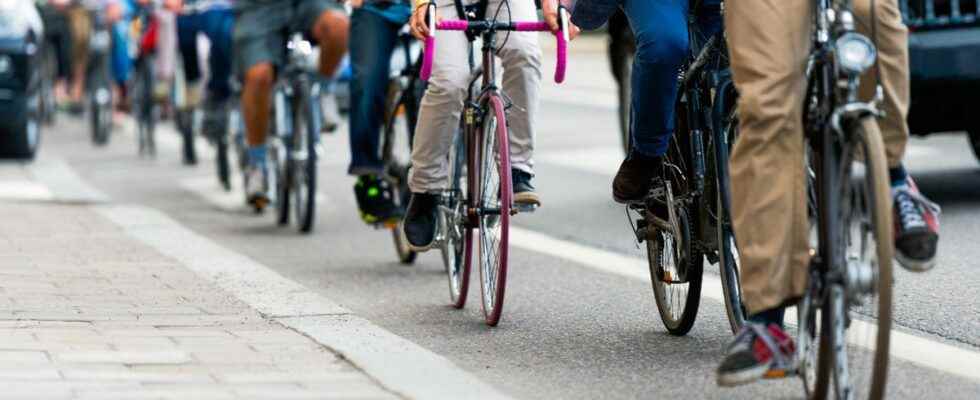The Vélo & Territoires association has published its observatory of cycling for the first eight months of 2022. Use is up compared to last year, driven by use in urban areas.
Vélo & Territoires uses data from counters in areas where cyclists pass in order to assess flows on key axes. The association has published figures for the period from January 1 to September 4, 2022 and notes, out of 297 so-called representative counters, an 11% increase in bicycle use nationally compared to 2021. The increase is even by 33% compared to 2019, the last year without upheavals such as confinements or the obligation to telework.
It’s not a big surprise, this progression hides a clear imbalance. Indeed, the increase only concerns urban areas (+ 14%), while the count shows stagnation in rural areas and even a very slight decrease (-1%) in peri-urban areas. The massive infrastructure development that has taken place over the past two years in large cities continues to pay off. Dunkirk, Grenoble, Nantes and Lille are among the cities that are progressing the most from one year to the next.
Vélotaf in the city, leisure in the countryside
The observatory published by Vélo & Territoires shows that the practice of cycling differs in the city and outside it. While the frequentation of the axes on which the meters are placed shows a majority use from Monday to Friday in town, it is the weekend that those positioned in the countryside record the most passage. Despite everything, the increase in attendance is there compared to 2019, even in rural and peri-urban areas, regardless of the day of the week considered.
Nor is it surprising to find that the weather has an impact on cycling. Admittedly, in absolute value, attendance is lower in winter in January and February, but all areas experience some growth during this period. Rural areas nevertheless seem to be more impacted by the vagaries of the weather, with the use of bicycles there being less constrained and more oriented towards leisure. The analysis of the association also points out that it is difficult to compare the results of July 2022 with those obtained a year earlier, the month of July 2021 having been very rainy unlike that this year.
It is likely that the planned investments in infrastructure related to cycling will help maintain this momentum. The price of fuel, which exploded in the 2nd and 3rd quarters, is probably not unrelated to this increase in the biclou. Too bad, however, that the bicycle bonus, even increased this summer, remains so unattractive for most households. Its cap at 40% of the price of a bicycle, at a time when the latter are subject to high inflation, remains a very clear brake.
